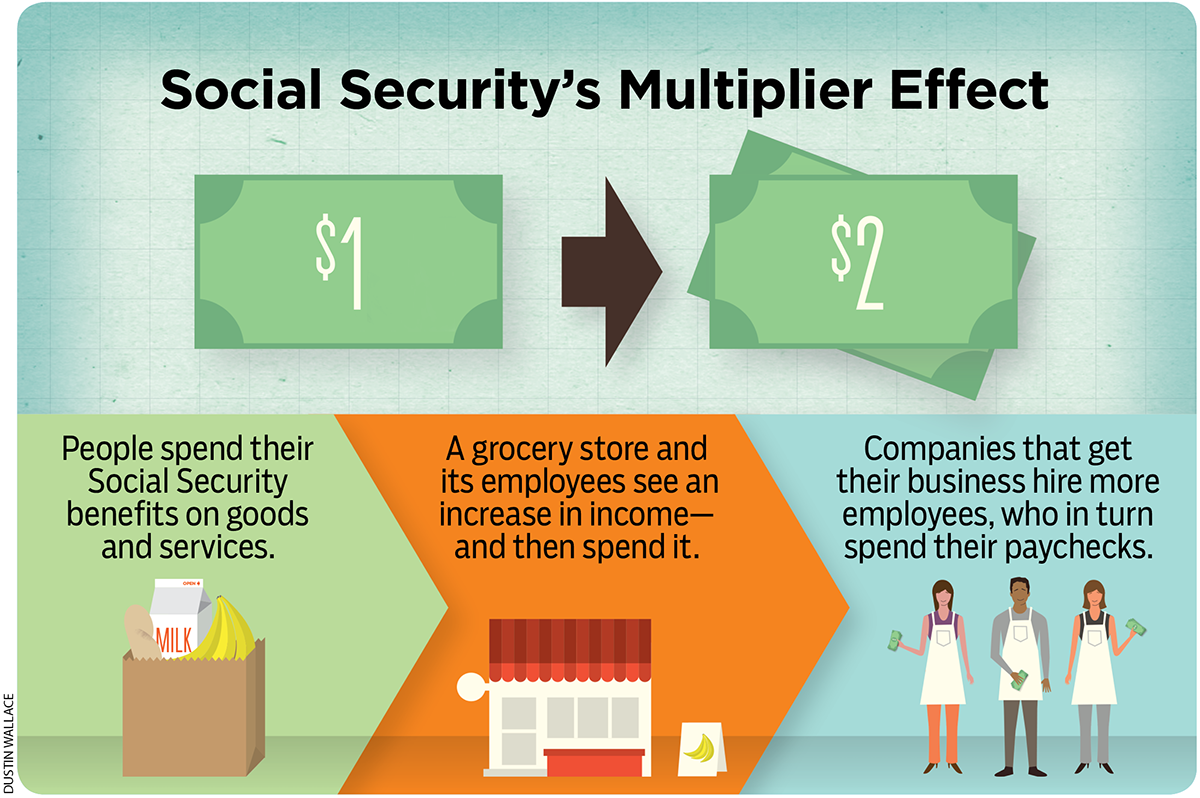AARP Hearing Center
Social Security's One-Two Punch
By Bill Hogan, October 1, 2013 08:00 AM
You may not think of Social Security as an economic stimulus program, but it is.
A new report from AARP, in fact, shows that every $1 paid out by Social Security generates, in turn, about $2 of total output for the U.S. economy - or nearly $1.4 trillion in 2012.
Economists call this the "multiplier effect." Simply put, that's when one person's spending (in this case, spending generated by Social Security benefits) becomes a second person's income, then the second person's income is spent and becomes a third person's income, and so on.
See Related: Social Security A to Z Glossary
The report also shows that the $762 billion in Social Security benefits paid out in 2012 supported more than 9 million jobs - full- and part-time. Its publication comes amid calls from some quarters for Congress to slow the rate of increases in Social Security benefits.
It's important to remember, too, that Social Security kept more than 22 million Americans out of poverty last year, including 15 million adults 65 and older.
The notion that a retirement pension such as Social Security would have a multiplier effect is by no means new. Francis Townsend, M.D., envisioned just such a thing in 1933 when he first floated his Townsend Old Age Revolving Plan, an immensely popular proposal that influenced the establishment of the Social Security system two years later. The basic idea behind the Townsend Plan was that the government would provide a pension of $200 per month to every American age 60 and older, funded by a 2 percent national sales tax.
The Historian's Office of the Social Security Administration explains:
"Townsend's idea took off from a well-known principle in economics - the 'multiplier effect' of money. It is a truism in economics that when John Q. Public spends, say, $200 to buy a new gizmo, the amount of economic impact this produces is not just $200. The seller of the gizmo will in turn take this $200 and use it to buy groceries, or other gizmos, and this will further stimulate economic activity. So an expenditure of $200 has more than $200 worth of impact on the economy. This much is standard economics. Economists are not in agreement on how large this multiplier effect is, or precisely how to measure it, but its existence is well-known."
Well, now there's an answer, at least when it comes to Social Security:

That's a national average. Want to know how much economic punch Social Security packs where you live? Check out the state-by-state numbers here.
Also of Interest:
- Divorce and Social Security Benefits
- Retire at 62 ... 65 ... 70? New Social Security Calculator Shows You the Money
- Questions about the Affordable Care Act? Get your answers here.
- Join AARP: Savings, resources and news for your well-being
See the AARP home page for deals, savings tips, trivia and more































































